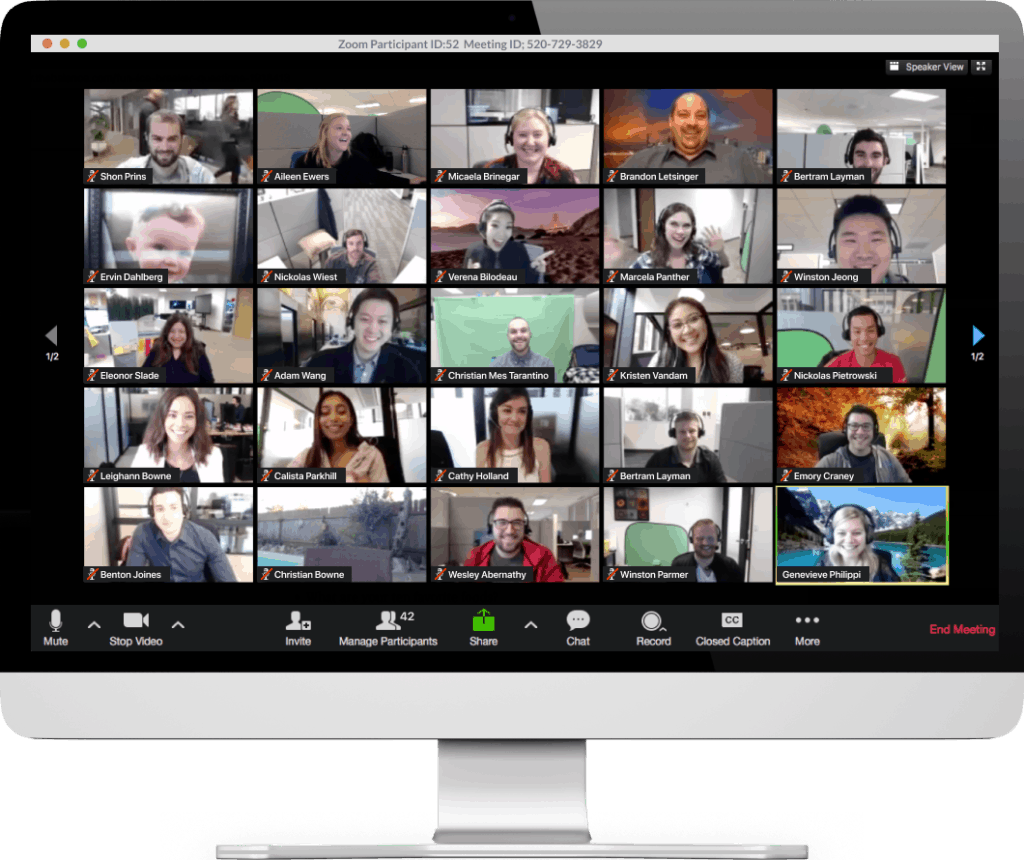
By Peg Bolgioni
In March 2020 at height of the Covid-19 pandemic, companies like Vermont Electric Power Company (VELCO) were scrambling to have the majority of their employees work remotely. They had to be in a safe environment but still needed to remain connected to one another, so adjustments had to be made. Face-to-face meetings ceased and video conferencing platforms like Zoom became the norm.
Now, almost a year later, most meetings are still held via Zoom. The Mountain Times followed up with VELCO to see how their employees have adapted. Has it been an easy transition, or fraught with challenges? How have the employees adapted to those changes in the workplace?
Shana Louiselle, VELCO’s communications and policy advocate, explained that their company went remote right before the governor’s Stay at Home order was released. Not knowing when they would be able to be together again as a company, their first order of business was to implement a bi-weekly companywide teleconference call that eventually morphed into a companywide Zoom meeting to ensure everyone stayed connected.
“At the very beginning our leadership shared what was new with the virus and how it was impacting Vermont,” said Louiselle. “Now, our Friday Zoom calls allow us to invite a guest to speak. It is a wonderful opportunity for us to have conversations with national, state, and industry leaders on a weekly basis, which has been a tremendous benefit to the staff as a way of keeping us connected to issues outside of VELCO. Those calls attract over 100 employees each week and at the end there is always a Q&A period.”
With multiple video meetings scheduled throughout the work day, a condition has developed with employees called “Zoom fatigue.” One can experience symptoms like sore eyes and headaches from staring at a computer screen all day, lack of focus, and inability to get a word in during a meeting.
Louiselle acknowledged that Zoom fatigue is real at VELCO, knowing it can be tiresome and draining to be online all day with back-to-back virtual meetings. For some, those meetings can even extend after hours if employees are involved in non-profit organizations, school boards, or local government.
“At VELCO we understood even before the pandemic that sitting in front of computer screens for long periods is not a good thing,” she noted. “We have always strongly supported an active and healthy workplace philosophy like encouraging employees to take micro-break stretching opportunities twice a day, or go outside and take a walk around the building. With so many working remotely it’s not easy to have that same motivation. However, our leadership team continues to provide a great deal of support and encouragement for us to schedule non-Zoom blocks on our calendars to avoid meeting burnout. On our companywide calls there is a consistent message to remind people to take a break from your screens and get outside. If employees are struggling with isolation, we want them to reach out to their managers and members of their team.”
But the question remains, how do employees stay on their game remotely? Human beings are social creatures and we communicate through body gestures and facial expressions. Video calls make us communicate in different ways with prolonged eye contact and minimal gestures while having to remain in the same spot. Therefore, it is more obvious on screen when someone appears distracted or elects to mute their audio or turn off their camera.
Louiselle maintains that VELCO has not had the issue of people acting inappropriately on Zoom. “This goes back to the workplace culture VELCO instilled pre-pandemic. We worked hard to instill good meeting etiquette like showing up on time, leaving your cell-phones outside, and have prepared meeting agendas in advance. Having that culture in place says that we trust each other as colleagues, and if I exhibit improper on-camera behavior, I trust you to say something to me because I’m probably not doing it intentionally.”
She also credits VELCO’s IT team for keeping everyone connected and supporting their technology needs. “They have been incredible partners in ensuring that we have the right systems in place to hold virtual meetings from computers to ergonomic chairs.”
Will the workplace landscape change again once more people are vaccinated? “I don’t think so,” said Louiselle. “I think there are lots of employees who would prefer to work at home in a quiet personal space versus an open office concept. A number of our employees come from around the state with long commutes. It will likely be something that does not go away.”
Companies like VELCO understand the challenges of remote work and issues like Zoom fatigue. We are now in world where “work life” is “home life.” As Shana Louiselle aptly put it, “Now more than ever we need to help our employees find that work-life balance. We have to be flexible and adaptable because everyone’s situations are different during the pandemic.”




